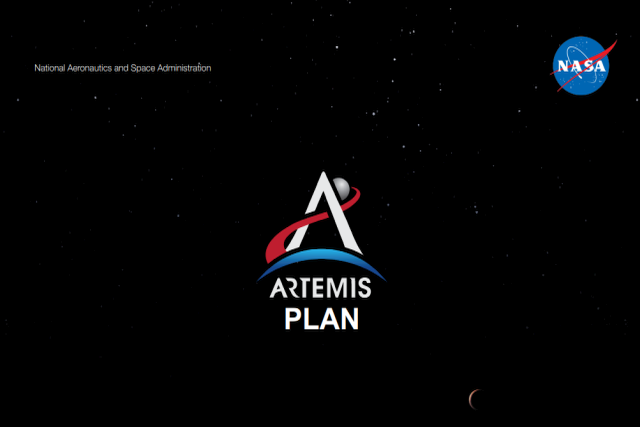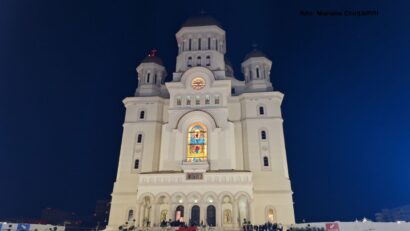The Artemis Program
The Artemis program aims to put a human crew on the Moon, which, for the first time, would include a woman

Corina Cristea, 19.08.2022, 01:50
Implemented by NASA with support from the European Space Agency (ESA), the Artemis program aims to put a human crew on the Moon, which, for the first time, would include a woman. The plan is for the third Artemis mission to launch astronauts towards the Earth’s natural satellite in 2025. This would be the first team to land on the Moon, over 50 years after the Apollo 17 mission. As part of this collaboration, the ESA provides the European Utility Module for Orion, the energy source that provides propulsion for the spaceship. In order to set common principles, directives, and best practices applicable to the entire program for the peaceful exploration of the Moon, of Mars, as well as comets and asteroids, NASA has introduced a series of declarations, the so-called Artemis accords, which Romania signed in early March.
Romania became the 16th signatory country, which, next to the others, takes on the responsibility to take all necessary measures to ensure that entities, as well as private operators who act in its name comply with the principles stated by these documents. Physicist Marius-Ioan Piso, PhD, who signed the documents on behalf of Romania, said: ‘We joined the Artemis Moon exploration program first and foremost out of a spirit of collaboration (…) One of the most clear benefits of participating in this unique mission is Artemis’ ability to be a magnet to draw the young generation towards science, discovery, innovation – which robots cannot yet do. It is also a means of shifting the focus from conflicts between people to the challenge of discovering, exploring, and defending the planet.
The Artemis Accords contain, reaffirm, and develop several principles of space law, in line with the norms and practices that derive from the treaty that has been governing, since 1967, the activity of states in the exploration and use of extra-atmospheric space. These are principles such as peaceful exploration, transparency, emergency assistance, provision of scientific data, and the conservation of heritage. The principles set by these accords are meant to apply to civilian space activities run by the line agencies of each signatory. Speaking on Radio Romania, Marius-Ioan Piso explained that the 55 year old treaty is still standing, there are no changes, we are talking about fine tuning that do not change its essence, but are needed to adapt to present conditions:
“The problems under discussion, the fundamental problems are firstly related to property on other planets, celestial bodies, areas of the universe, this is one discussion. Then there are issues related to resources, the use of resources in space, meaning the possibility of modifying the Universe to bring resources down to Earth. There is one topic that is obvious for everyone, that of peaceful use. There are no other changes – the fine tuning is for resources first and foremost, where there is a European initiative. A space resource center has been set up in Luxembourg for Europe – so we can maintain the parallel between space law and maritime law, instead of the Moon we can think of Antarctica, the differences are very small, the differences are only in terms of the capacities and costs needed for various purposes.’
In terms of the resources from space, we are talking about the hypothetical diamonds in meteorites and asteroids, which are being sought, or hypothetical heavy metals, said Dr. Piso. At the same time, in the case of the Moon, the concentration of Helium 3, the heavy isotope of helium, is significantly higher than on the Earth, and that could be more easily used for future fusion reactors, so we are talking about a commercial use. But the head of the Romanian Space Agency added:
“The Moon is essential for science, first and foremost. The Moon can offer places to set up detectors, measuring systems for experiments that cannot be successfully made on the Earth. Also, the Moon can provide us with much information about what happened and what happens with the area of near space. The surface of the Moon works as a sort of recorder, a tape of history for the 4 or 5 billion years it has been around, and these things can be deciphered. I want to also talk about a very important role that the Moon has – that of using it as a springboard for missions towards other planets, Mars, for instance. Flights can take off from there much easier, because we can use its very low gravity, which is six times lower than that of the Earth, and then this could be the third purpose.
At the signing ceremony of the accords, NASA administrator Bill Nelson said that now, more than ever, we have to work across borders in order to consolidate partnerships and assure the peaceful use of extra-atmospheric space. According to him, Romania joining the Accords is an important step towards achieving their goals. The US enjoys over 140 years of diplomatic relations with Romania, and NASA salutes the support that Romania provides in exploring space, as we draw a new course together, said Bill Nelson.






























